Unusual Birds Introduction
Nature makes some strange and unusual creations and the bird world is not untouched by her weird designs. Sometimes it is hard to understand why some of these bizarre creatures exist. Rest assured, nature knows what she is doing and there are always reasons for the unusual birds that may confuse and baffle us.
In this article, we’re going to explore 10 unusual birds from around the world. You will see images, hear their weird and sometimes frightening calls, and see videos of these mind-blowing creations. Read on to enjoy the strangeness…
1. Potoo
This bird starts our list because it is one of the most unusual birds I have seen during my studies.
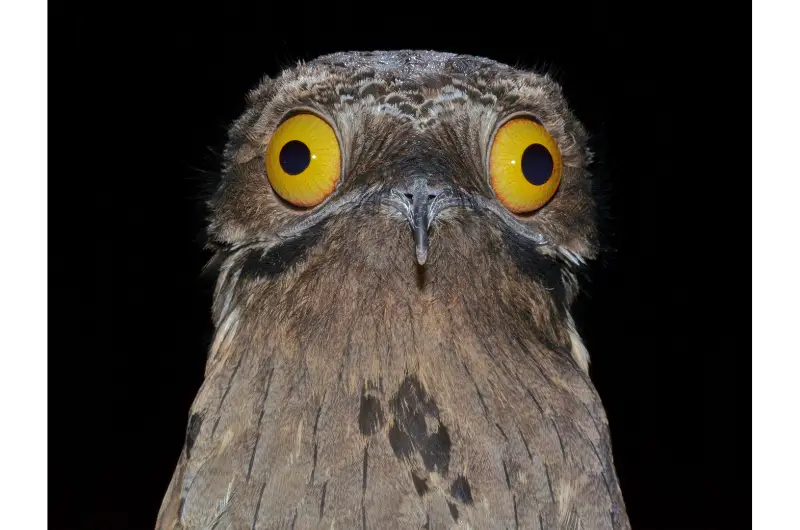
The Potoo (pronounced Poe-too) is a nocturnal bird found in South and Central America. They are between 21-58 cm (8.3–22.8 in) in length and have a wingspan of around 70cm.
There are 7 different species of Potoo:
- Common Potoo
- Great Potoo
- Long-tailed Potoo
- Northern Potoo
- Andean Potoo
- White-winged Potoo
- Rufous Potoo
What makes it unusual are its huge, Muppet-like eyes and its massive mouth. You almost expect to see someone underneath a Potoo with their hand up its back, controlling it like a puppet?!

Of course, those huge bug-eyes are designed to help it see quite well at night when it spends its time flying about catching insects.
Another interesting thing about Potoo’s eyes is their ridged top eyelids. These help it to keep an eye on things even while sleeping.
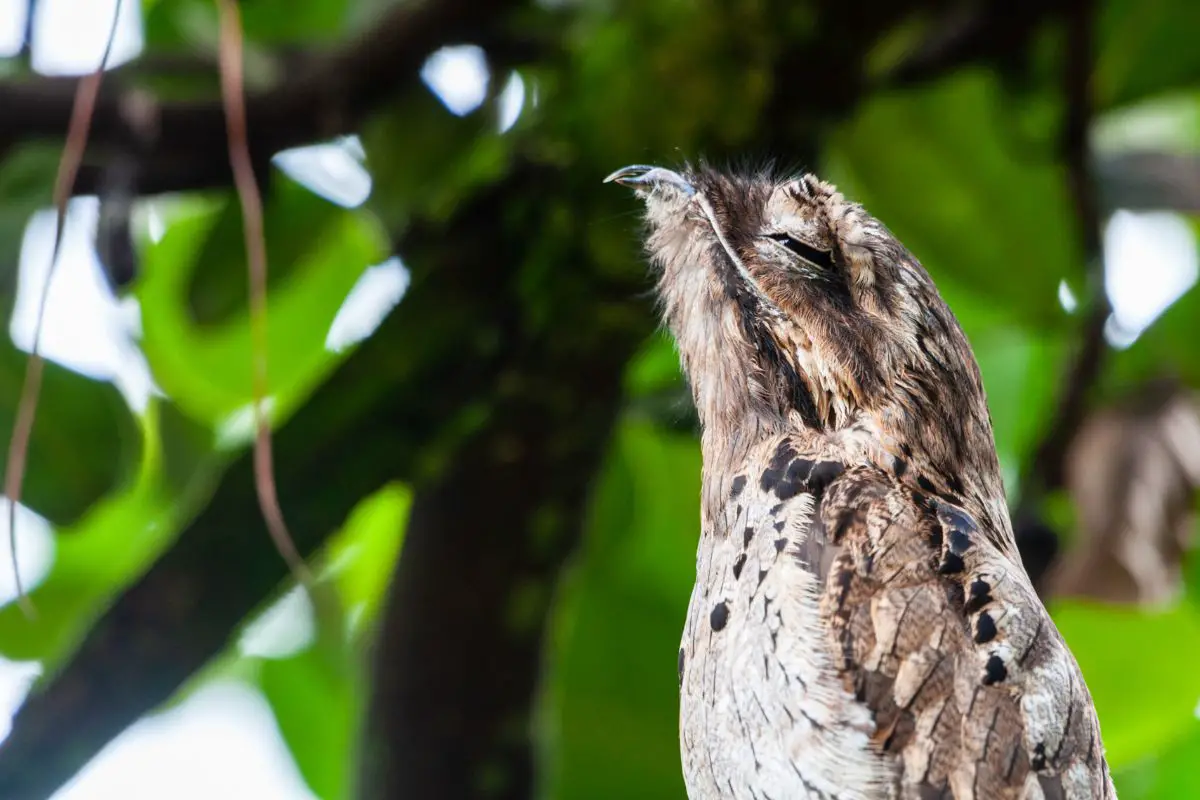
The Unusual Behavior Of The Potoo
Potoos are not just unusual in their appearance, they also have some strange behaviors. Perhaps the strangest of all is the way they lay a single egg in a knothole at the end of a branch, right out in the open!
The egg is incubated, often by the male bird, using its incredible talent for camouflage. Potoos, like the Tawny Frogmouth of Australia, blend exceptionally well with the branches of trees. They stretch their necks, pointing their beaks to the sky, stay incredibly still and pretend to be a stick!
Their plumage is perfectly colored for blending with tree bark.
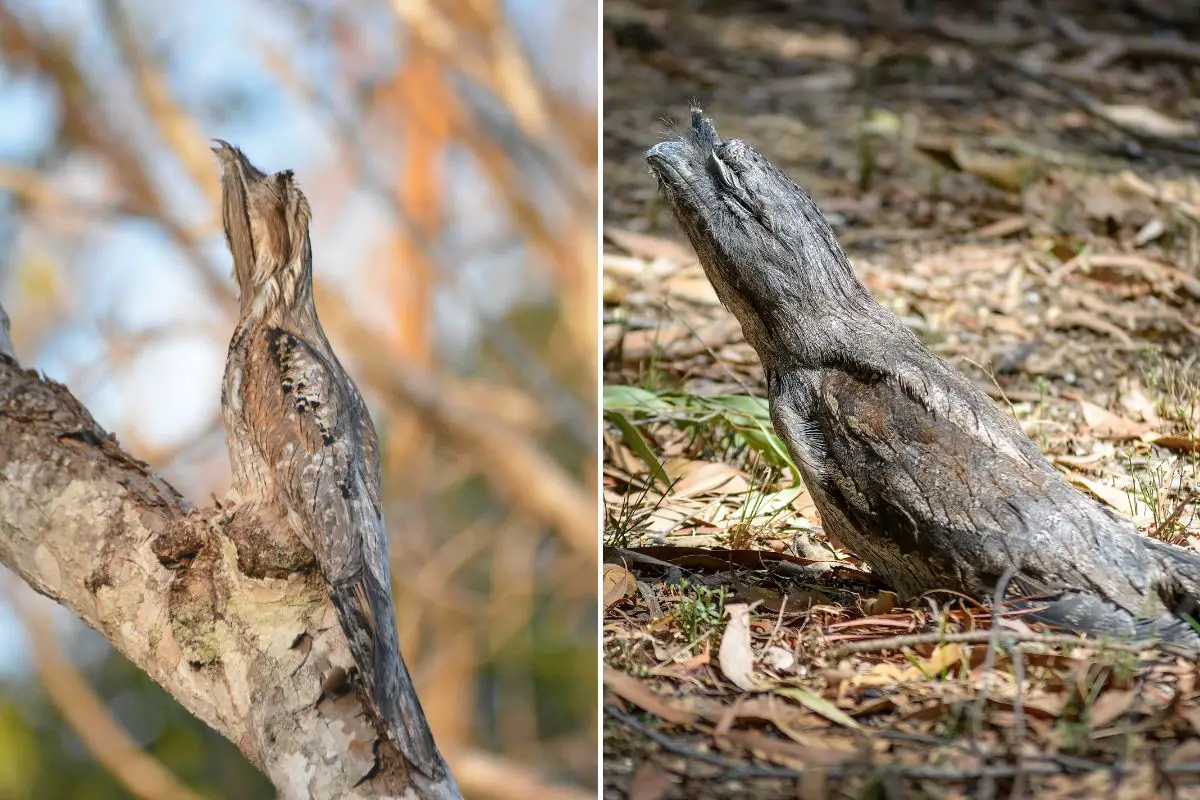
The video below from James Wolfe on YouTube shows this skillful camouflage. You also get to hear the strange calls of the Potoo in this video:
2. Kiwi
This unusual bird lives in the forests of New Zealand and is rarely seen due to the fact they are nocturnal and live in burrows under the ground.

Kiwis are 25-45 cm (9.8-17.7 in.) in length. Their long bills are designed for foraging in the undergrowth of NZ forests. They have nerve endings at the end of the bill to aid in finding prey in the undergrowth.
Their bills are very flexible also which aids in foraging for worms and other invertebrates.
There are 5 species of Kiwi:
- Southern Brown
- Okarito Brown
- North Island Brown
- Little Spotted
- Great Spotted
These strange little New Zealanders are flightless and have almost no wings at all. Their plumage is more like hair than feathers.
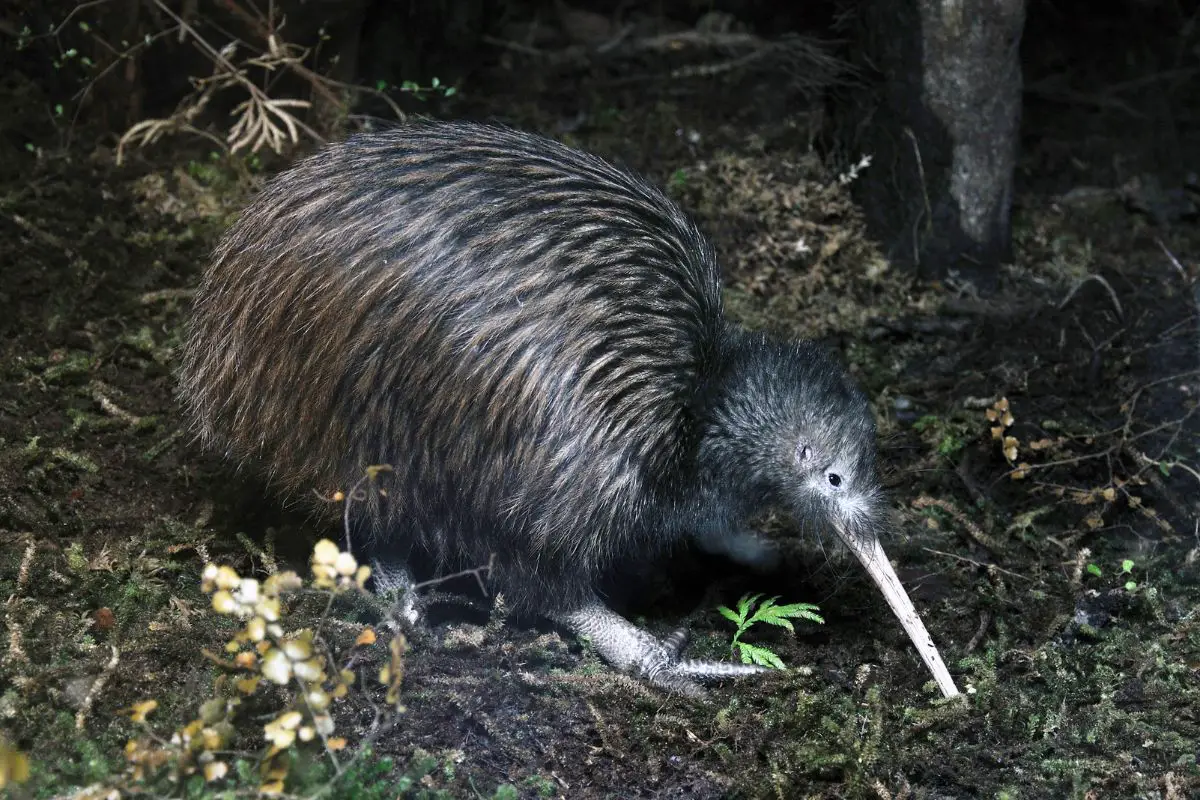
Another interesting fact about Kiwis is they have mammal-like body temperatures which along with their plumage and general appearance make them very unbirdlike.
Listen to the call of the North Island Brown Kiwi below:
3. Shoebill
Does this bird even exist?! Yes, it really does…
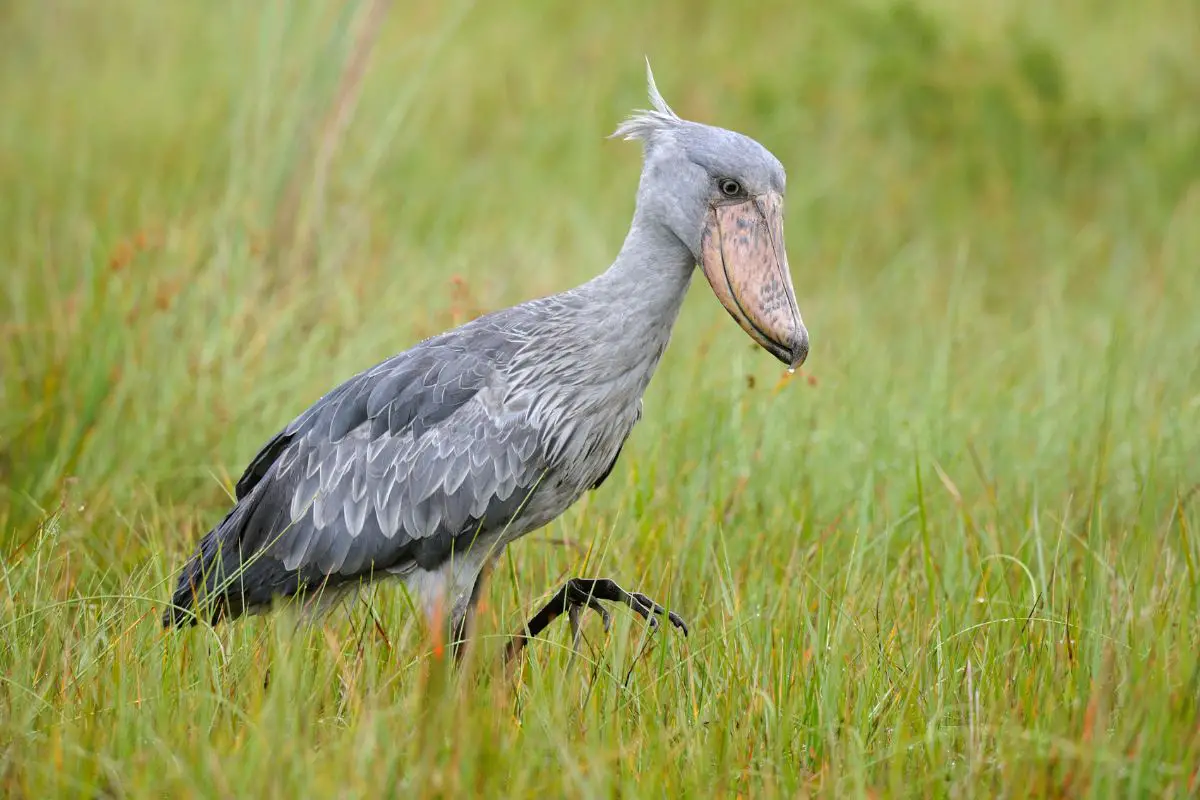
If you think the Shoebill looks a little scary or intimidating, imagine standing next to one – they are 110 to 140 cm (3.6 to 4.5 feet), and some specimens reach as much as 152 cm (5 feet)?!
Their wingspan is impressive too at around 230 to 260 cm (7’7″ to 8’6″).
The Shoebill obviously gets its name from that clog-shaped bill. The bill is designed for catching and swallowing large fish and is in fact very sharp on the edges, being able to decapitate unfortunate fish.
Discover 10 Australian Birds that love to eat fish in this article right here on Birdwatch World.
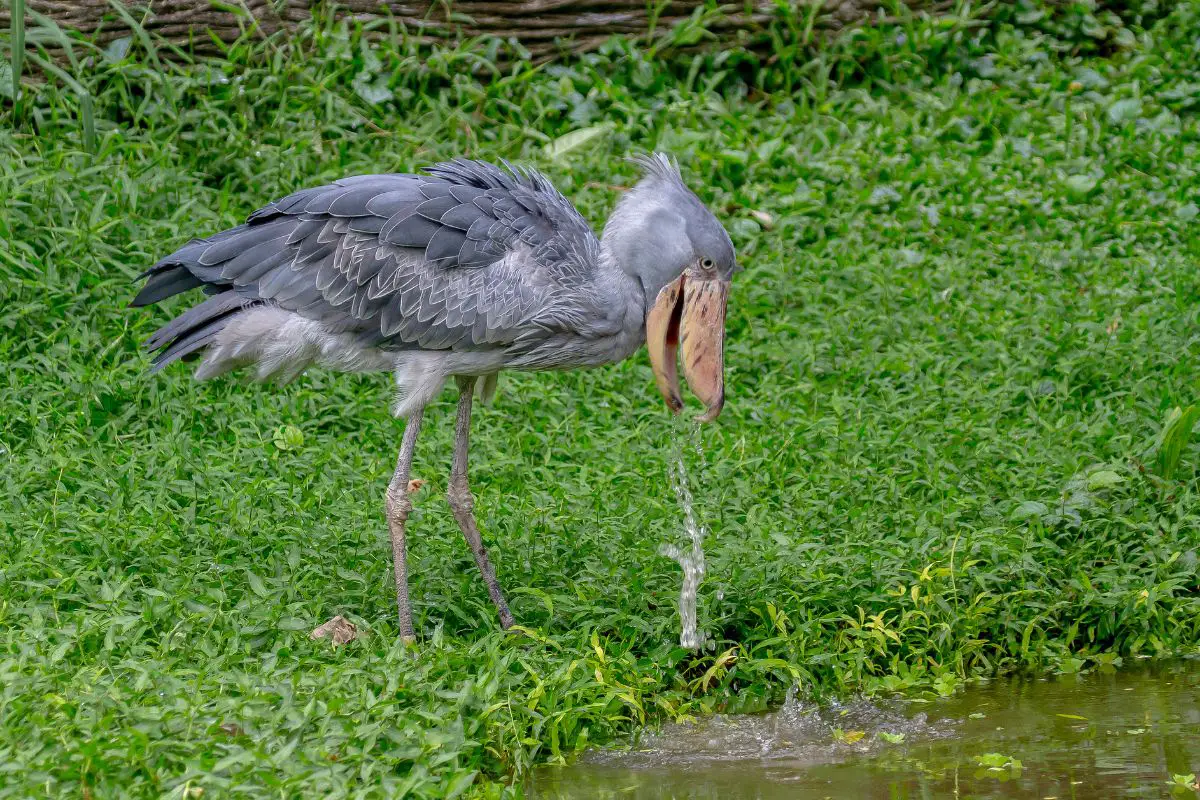
The Shoebill is a mostly quiet bird. One sound they do make is a machine gun-like tapping with their bill which they do to attract a mate.
Shoebills are found in Central Africa. It can be very hot in that part of the world and to cool themselves down, Shoebills will poop on their own legs. Sound disgusting? Well, they are not the only birds that will do this. Turkey Vultures also have this nasty habit, read more facts about birds and their pooping in this article here on the blog.
4. King Vulture
When you think of unusual birds, Vultures might come to mind. They are etched in our minds as death stalkers and visions of evil thanks to Hollywood movies.
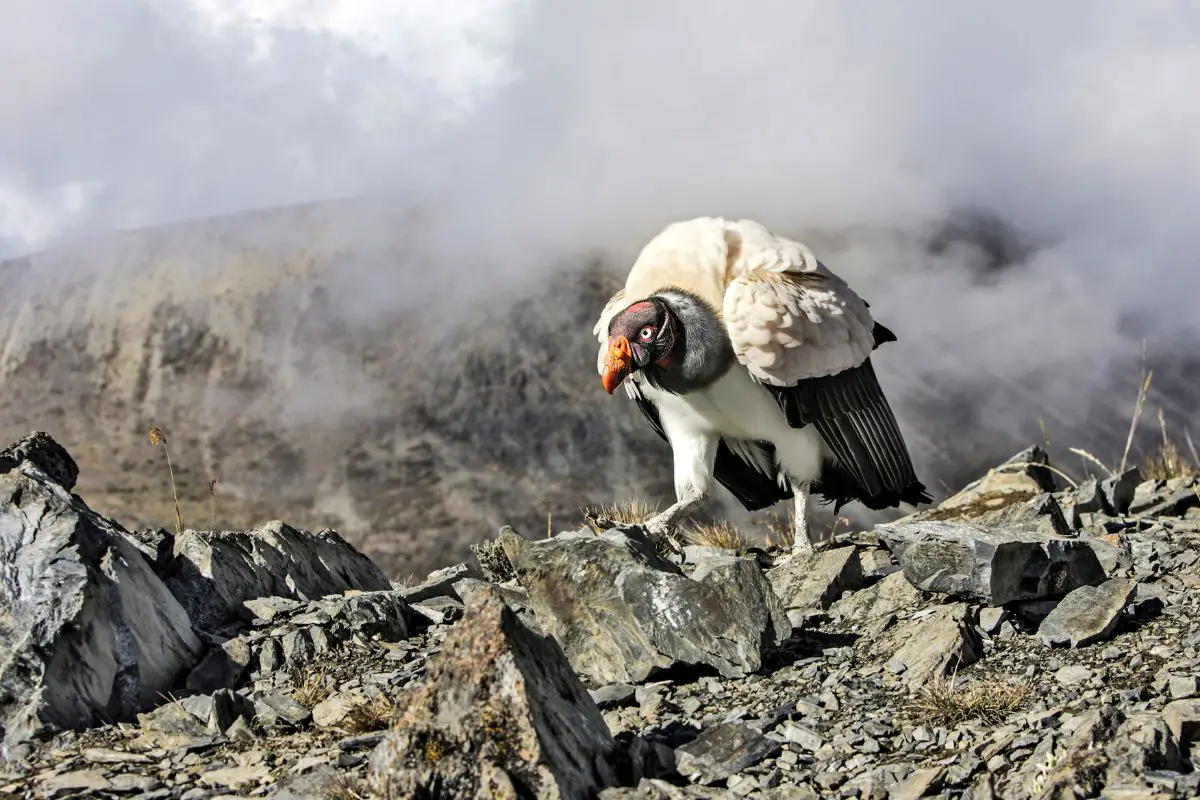
The King Vulture is perhaps the most beautiful of all vultures if that is even a word you can use for vultures! Though more attractive than most, they are still quite unusual.
The neck of the King Vulture is bare and bright yellow, orange, and pink in color. They have thin hair on their heads and a bald patch on the top (kind of like me!).

Perhaps their most unusual feature is the caruncle above their beaks. This is a lumpy, orange growth that appears to have no purpose. However, all this color and extra skin are important in courtship displays and may even help the birds recognize each other.
King Vultures are relatively large birds at 67 to 81 cm (26–32 in) in length, with wingspans of between 1.2 to 2 m (4–7 ft).
The lack of hair and/or feathers on their head and neck may help to keep these areas clean while they are feeding on a carcass. View footage of King Vultures feeding below:
If you want to see King Vultures in the wild, you will have to take a trip to Central or South America.
5. California Condor
This guy got out of bed on the wrong side!
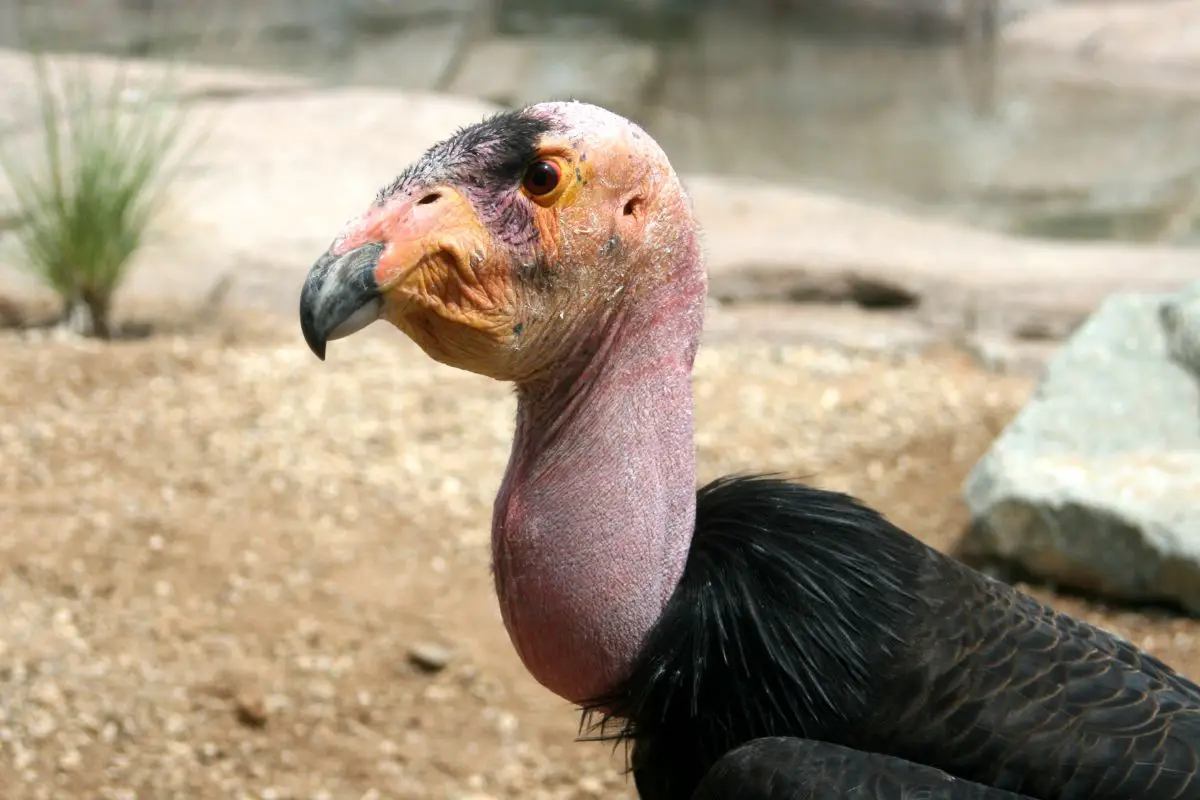
Meet another member of the Vulture family, the California Condor. These rather unusual and let’s face is grumpy-looking birds are found North of L.A. in California and also west of Las Vegas in Arizona and Utah.
California Condors are larger than King Vultures at around 117–134 cm (46-52.7 in.) long with a 2.49 to 3 m (8.2 to 9.8 ft) wingspan. Their size earns them the title of the largest flying land bird in North America.
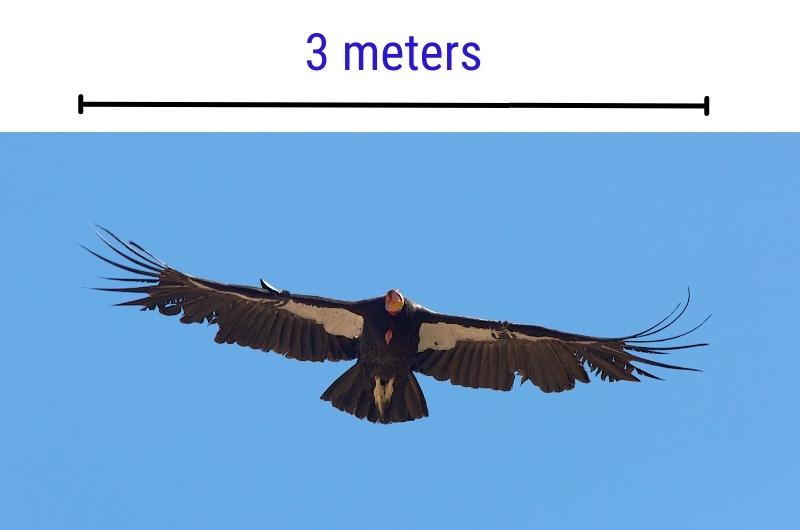
Like the King Vulture, California Condors have hairless necks and heads which again may help to make these areas easier to clean.
The puffy area on the throat of these birds is called a gular. The gular and other areas around the neck can be inflated during courtship displays. They also inflate air sacs in the head and neck region to intimidate rivals.

Males and females will also groom each other’s bare parts during courtship. How romantic…
Though female Californian Condors do not need a male in order to reproduce?! Watch the video below to discover the cases of asexual reproduction that have been observed:
6. Bearded Vulture
Someone needs a shave…

The Bearded Vulture is a suave-looking character with black eyebrows that extend down into what could only be called a goatee.
The red coloring in their neck feathers is the result of rubbing soil into themselves. This apparently makes them look more intimidating to other birds.
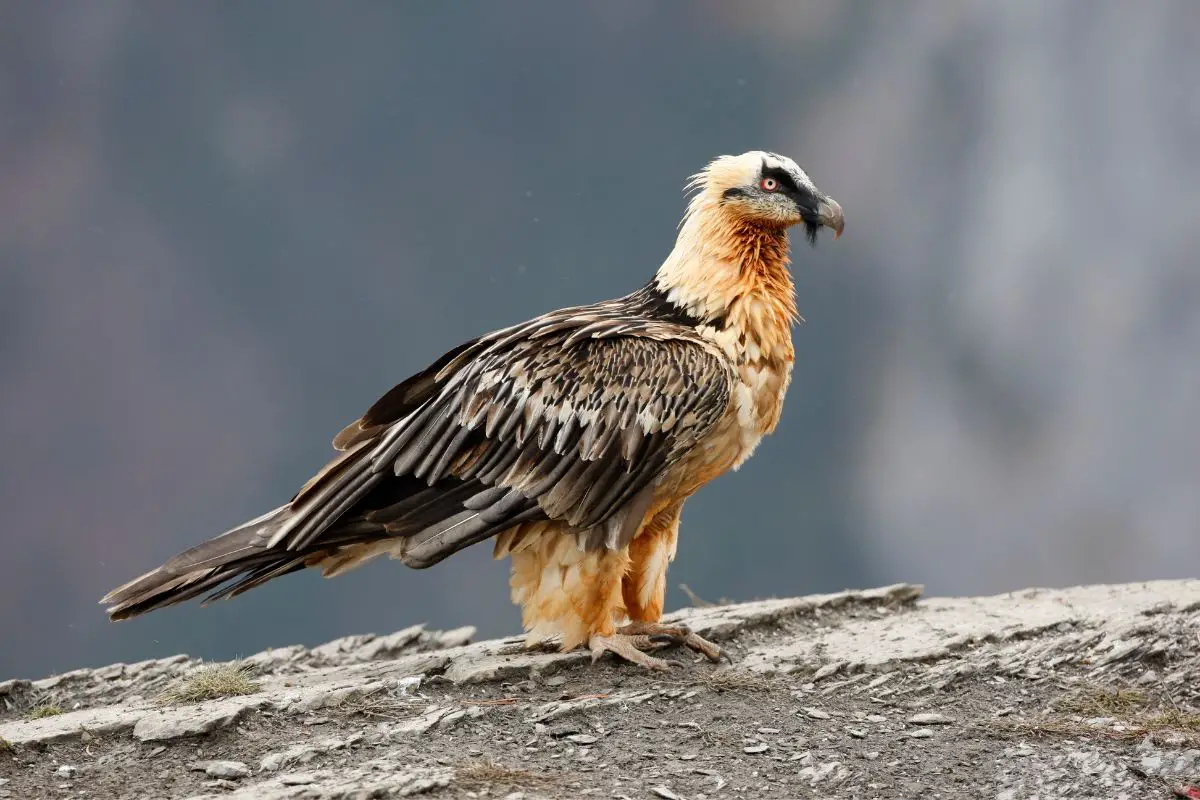
These birds are somewhere in between the King Vulture and California Condor at 94–125 cm (37-49 in.) in height with a wingspan of 231–283 cm (7.6-9.3 feet).
Another interesting feature of the Bearded Vulture is its feathered “trousers.” This is a heat-retaining adaption in birds that live in colder climates. Bearded Vultures prefer rugged mountain ranges and occupy a wide range of territories in Europe, Africa, and Asia.

An interesting thing about Bearded Vultures is their diet consists almost exclusively of bone. 70 to 90% of what they eat is in fact bone.
Listen to the whistling flight call of a Bearded Vulture below:
7. Long-wattled Umbrellabird
Ok, Nature, I love you but what the hell were you thinking with this one?!?
I am giving this bird the award for most unusual. With its umbrella-like crest and that wattle which may be up to 35 cm (13.8 in.) in length protruding from its chest, it is bordering on ridiculous?!
The crest can be lowered to cover almost its entire bill or held straight up. They can also lengthen or retract the wattle which they retract and hold close to their bodies during flight.
These very unique birds are only found in the foothills and lowland forest of the Pacific slope of the Andes, from Columbia to southwestern Ecuador. They are a very rare sight.
Long-wattled Umbrellabirds are between 36 and 41 cm (14.2-16.1 in.) and have a wingspan of around 66-71 cm (26 to 28 in.).
The purpose of their unusual feathers and crest is for impressive mating displays. You can see a male Long-wattled Umbrellabird displaying in this video:
8. Tufted Puffin
Ordinary Puffins are strange enough but the Tufted Puffin takes it that one step further…
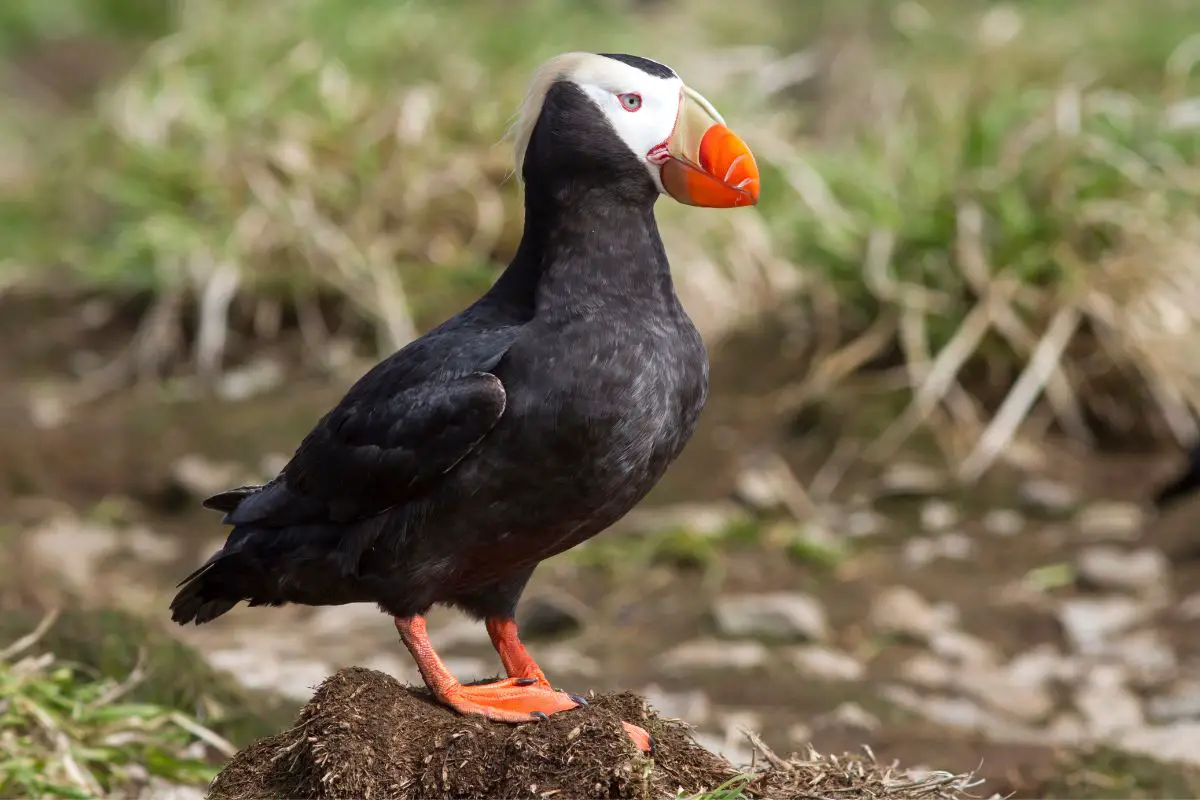
These rather stylish birds are widespread across the North Pacific Ocean. They are around 40 cm (15.7 in.) in length with a wingspan of about 64-66 cm (25.2-26 in.).
The defining feature of a Tufted Puffin is of course the plumes that cascade across their brows and down the back of their heads.
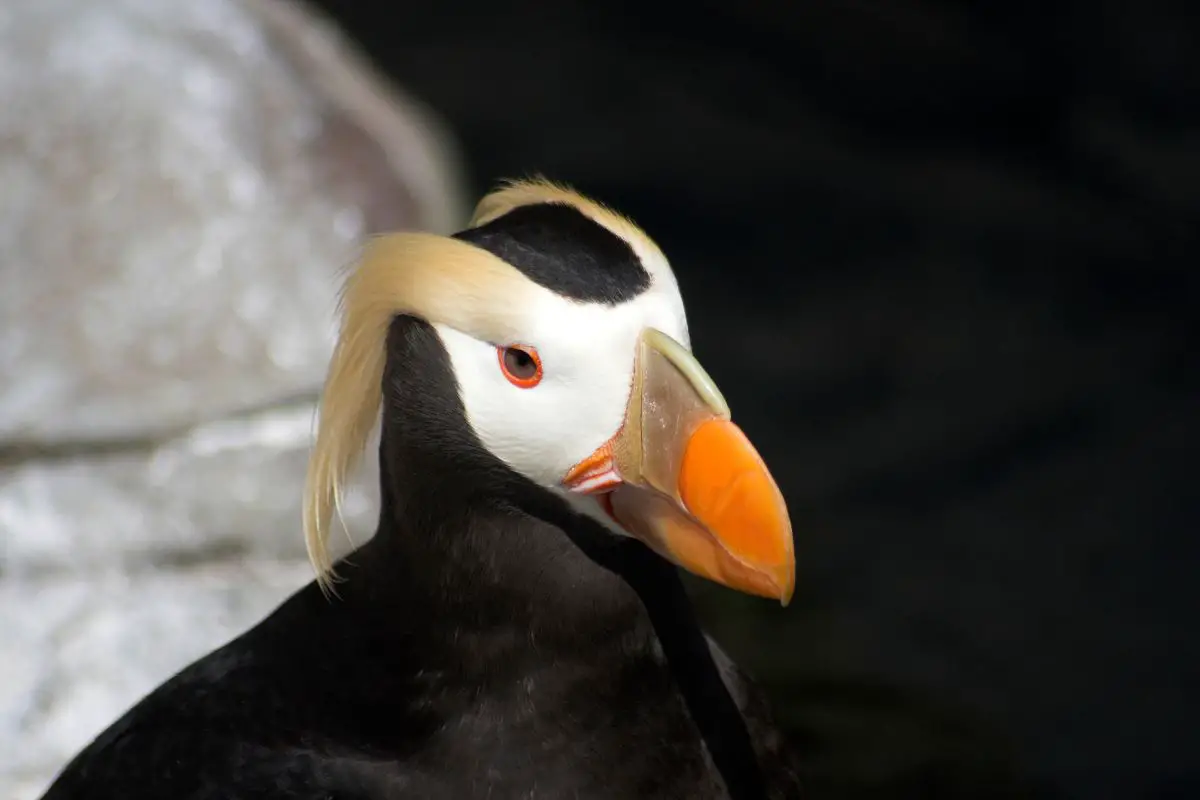
The fancy plumes of the Tufted Puffin appear to be simply decorative. During mating displays, the males are more concerned with opening their mouths to show the bright lining and pink rosette corners therein than with flashing their snazzy eyebrows.
Watch some great footage of Tufted Puffins in this video from Richard Sidley:
9. Hooded Merganser
Well…someone just left the salon?!
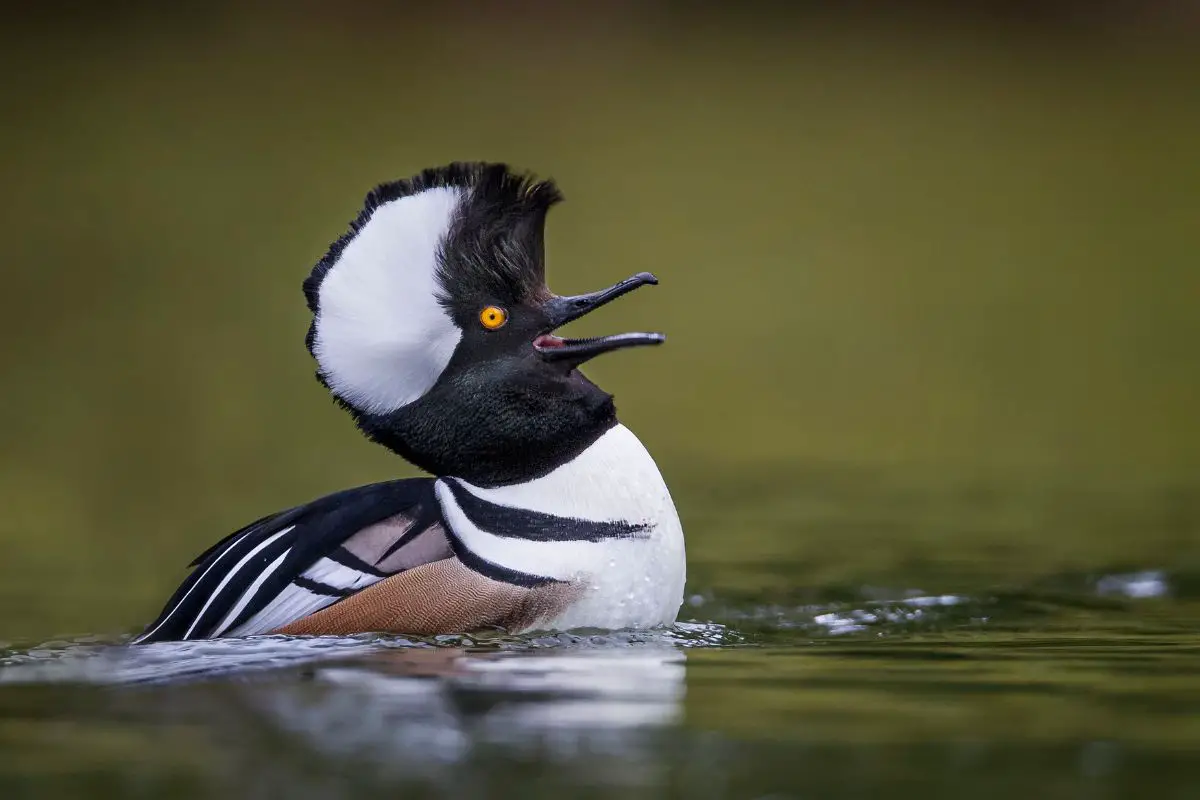
Widely spread across North America, this rather stunningly unusual bird is the smallest of three North American Mergansers (fish-eating ducks). They range between 40 and 49 cm (15.7 and 19.3 in.) in length.
The females, not to be outdone, also have an impressive crest.
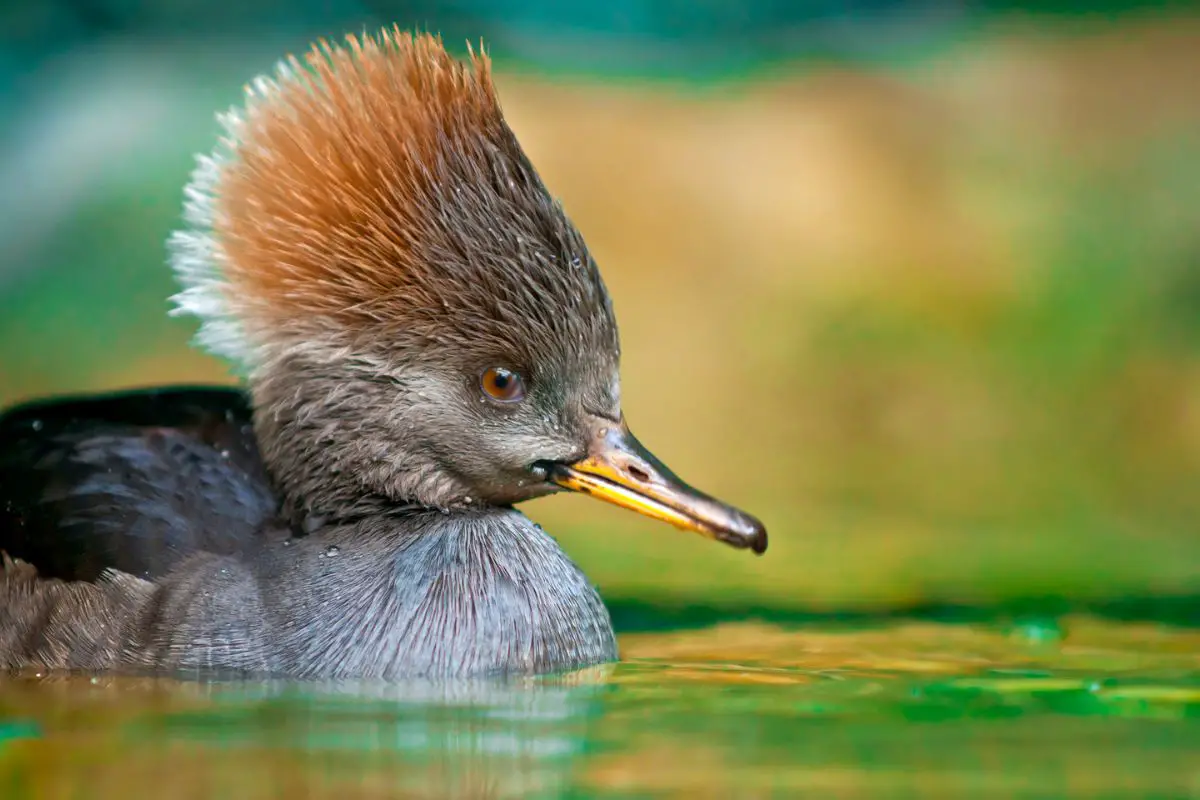
What other purpose for such an impressive crest could there be other than to show off to the opposite sex?
You can see in the video below how the Hooded Merganser males will make animated head movements during courtship displays, kind of waving it around like a flag:
Mergansers have sawlike “teeth” on the edges of their bills which help them to grip their prey.
10. Musk Duck
Our final unusual bird is also one of the weirdest – the Musk Duck of southeastern and southwestern Australia.
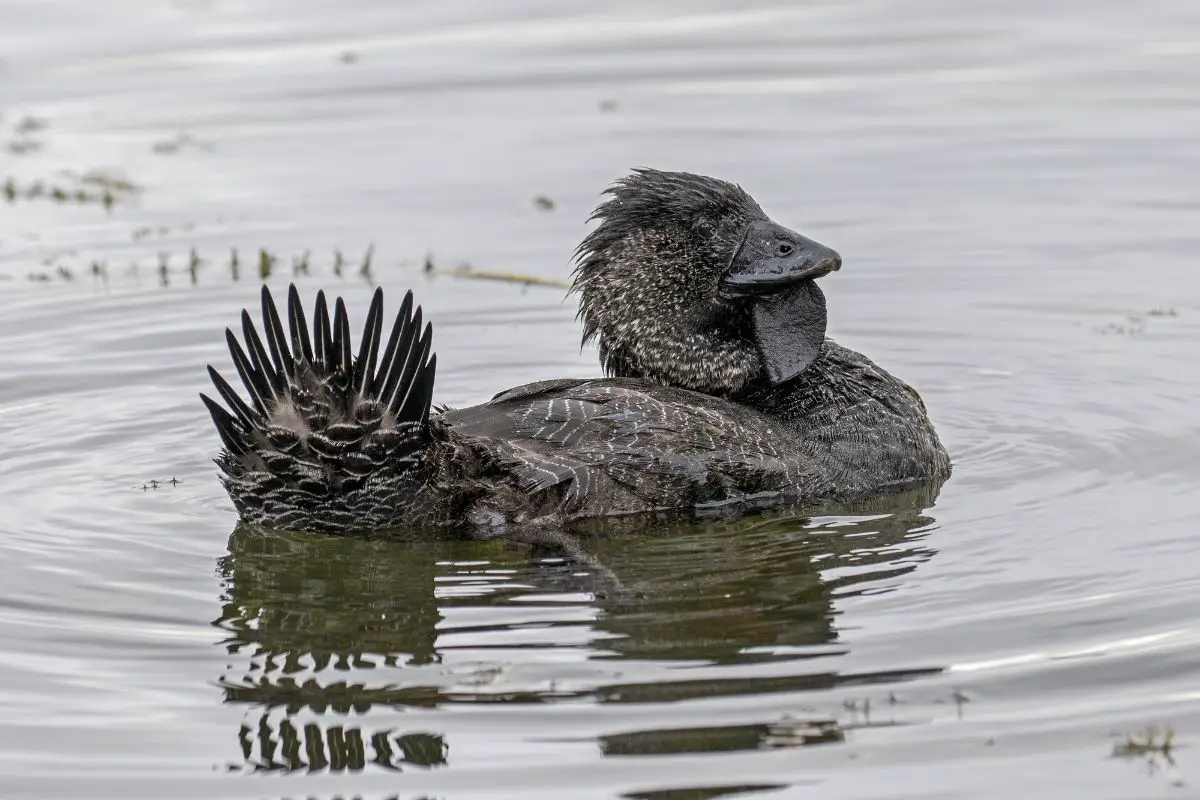
Male Musk Ducks are between 61-71 cm (24-28 in.) in length with a wingspan of around 87 cm (34.3 in.). The females are smaller at between 53-58 cm (20.9-22.8 in.) and have a wingspan of around 72 cm (28.3 in.)
The two distinguishing features of this duck are its stiff tail and the strange, leathery lobe hanging beneath its bill. As with other bizarre bird features we have seen in this article, a Musk Duck’s lobe is used to attract a potential mate.
The lobe can be inflated and held stiff during mating displays as shown in the video below:
Musk Ducks get their name from the smell they exude from a gland on their rumps during the breeding season.
The Musk Duck has a very unique call that sounds more like a baby chicken chirping than a duck:
Thank you for reading this far through the article. You can discover many more bird facts in the Bird Facts category here on my blog.
References
- Bird information – birdsoftheworld.org
- King Vulture Facts – Los Angeles Zoo
- 11 Facts About the Bone-Eating Bearded Vulture – Mental Floss
- Musk Duck – The Australian Museum
